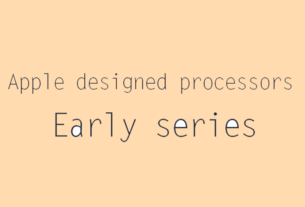Apple has been developing A series of chips designed exclusively for their own consumer products. The Apple “A” series is a family of “Systems on Chip” (SoC) used in multiple devices iPhones, iPod Touches, iPads, Apple TVs, and Apple Watches.
They integrate one or more ARM-basedprocessing cores (CPU), a graphics processing unit (GPU), cache memory and other electronics necessary to provide mobile computing functions within a single physical package. They are designed by Apple, and manufactured by Samsung and TSMC. Since the introduction of the A6 in 2012, Apple has been developing their own microarchitecture for their chips which have become considerably more powerful than other ARM-based microprocessors.
Apple A series: A4
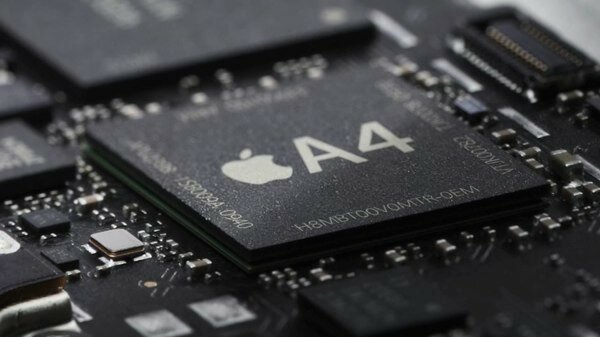
The Apple A4 chip, along with the original iPad, was announced on January 27, 2010, during Apple’s “Latest Creation” event. Apple A4 is based on the ARM processor architecture. The first version released runs at 1 GHz for the iPad and contains an ARM Cortex-A8 CPU core paired with a PowerVR SGX 535 graphics processor (GPU) built on Samsung’s 45 nm silicon chip fabrication process. The clock speed for the units used in the iPhone 4 and iPod Touch (4th generation) is 800 MHz, but the clock speed for the unit used in the Apple TV has not been released.
Apple A series: A5
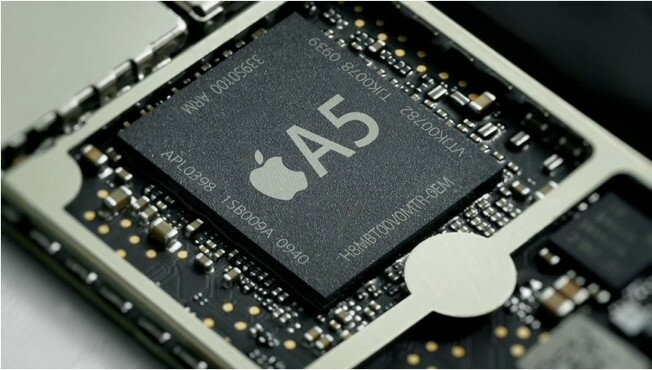
The A5 consists of a dual-core ARM Cortex-A9 CPU with NEON SIMD accelerator and a dual core PowerVR SGX543MP2 GPU. Apple lists the A5 to be clocked at 1 GHz on the iPad 2’s technical specifications page, though it can dynamically adjust its frequency to save battery life. The unit used in the iPhone 4S is clocked at approximately 800 MHz. Apple has also included an image signal processor unit (ISP) that will do advanced image post-processing such as face detection, white balance and automatic image stabilization and an “earSmart” unit from Audience for noise canceling.
Apple A series: A5X

The A5X features a dual-core ARM Cortex-A9 CPU at 1 GHz and a quad-core PowerVR SGX543MP4 GPU clocked at 250 MHz. Apple doubled the size of the A5X’s memory interface in comparison to the A5, including a memory interface subsystem with four 32-bit wide LP-DDR2 memory controllers. This was done to provide sufficient bandwidth for the very high pixel count on the third generation iPad’s Retina Display.
The Apple A5X is a 32-bit system-on-a-chip (SoC) designed by Apple Inc., introduced at the launch of the third generation iPad on March 7, 2012. It is a high performance variant of the Apple A5; Apple claims it has twice the graphics performance of the A5. It was superseded in the iPhone 5 and 5C by the A6 chip and the fourth generation iPad by the A6X chip.
Apple A series: A6
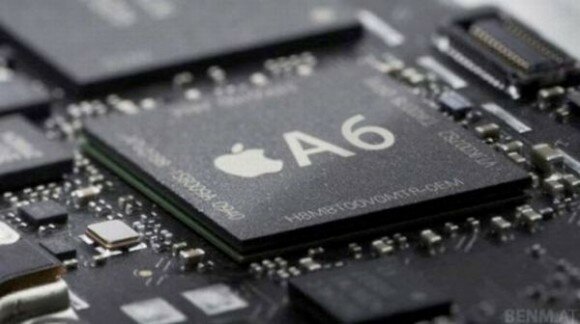
The A6 is manufactured by Samsung on a high-κ metal gate (HKMG) 32 nm process and the chip is 96.71 mm2 large, which is 22% smaller than the A5. The A6 also consumes less energy than its predecessor.
The A6 is said to use a 1.3 GHz custom Apple-designed ARMv7 based dual-core CPU, called Swift, rather than a licensed CPU from ARM like in previous designs, and an integrated 266 MHz triple-core PowerVR SGX 543MP3 graphics processing unit (GPU). The Swift core in the A6 uses a new tweaked instruction set, ARMv7s, featuring some elements of the ARM Cortex-A15 such as support for the Advanced SIMD v2, and VFPv4. The A6 is manufactured by Samsung on a high-κ metal gate (HKMG) 32 nm process.
Apple A series: A6X
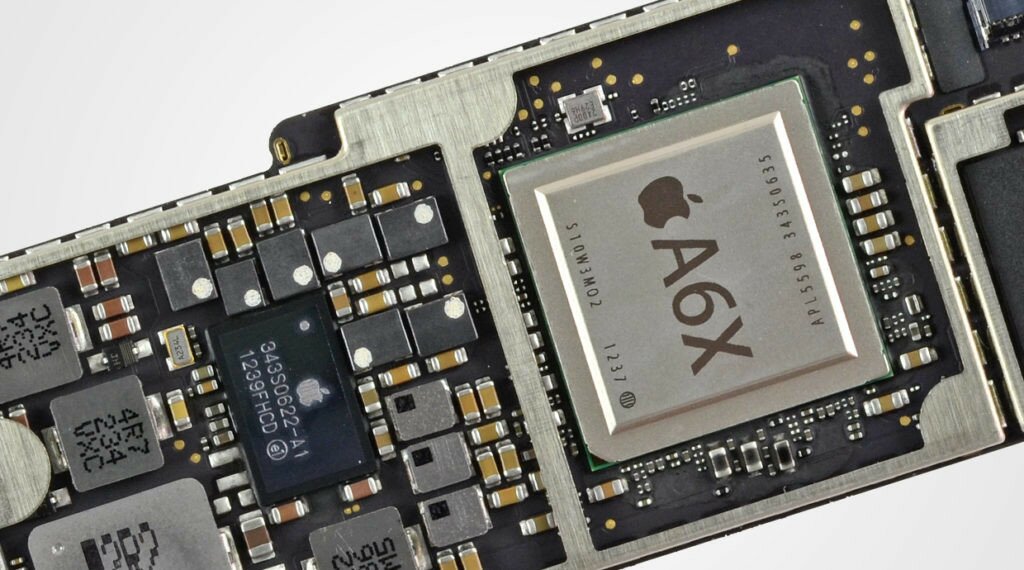
Apple A series: A7
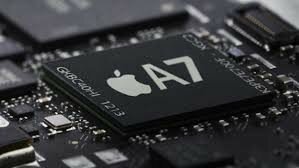
Apple A series: A8
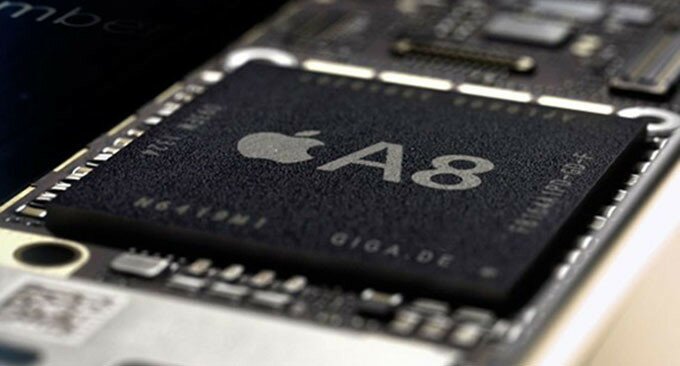
The A8 is manufactured on a 20 nm process by TSMC, which replaced Samsung as the manufacturer of Apple’s mobile device processors. It contains 2 billion transistors. Despite having twice the number of transistors of the A7, the A8’s physical size has been reduced by 13% to 89 mm2.
The A8 also integrates a graphics processing unit (GPU) which is a 4-shader-cluster PowerVR GX6450.
The A8 uses LPDDR3-1333 RAM on a 64-bit memory interface; in the iPhone 6/6 Plus, sixth generation iPod touch and HomePod the A8 has 1 GB RAM included in the package, while the A8 in the iPad Mini 4 and 4th generation Apple TV is packaged with 2 GB RAM.
Apple A series: A8X
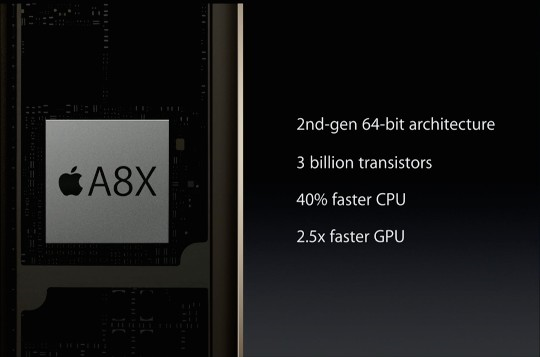
Unlike the A8, this SoC uses a triple-core CPU, a new octa-core GPU, dual channel memory and slightly higher 1.5 GHz CPU clock rate. It uses an integrated octa-core PowerVR GXA6850 graphics processing unit (GPU) running at 450 MHz and a dual-channel memory subsystem. It is manufactured by TSMC on their 20 nm fabrication process, and consists of 3 billion transistors.
The A8X has three cores clocked at 1.5 GHz, a more powerful GPU compared to the A8 and it contains 3 billion transistors. With an extra 100 MHz and an additional core, the A8X performs around 13% better on single threaded and 55% better on multithreaded operations than the A8 inside the iPhone 6 and iPhone 6 Plus.
Apple A series: A9
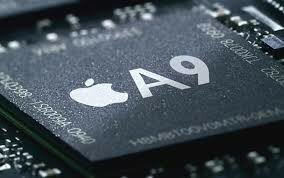
The A9 includes a new image processor, a feature originally introduced in the A5 and last updated in the A7, with better temporal and spatial noise reduction as well as improved local tone mapping.
The A9 features an Apple-designed 64-bit 1.85 GHz ARMv8-A dual-core CPU called Twister. The A9 in the iPhone 6S has 2 GB of LPDDR4 RAM included in the package. The A9 has a per-core L1 cache of 64 KB for data and 64 KB for instructions, an L2 cache of 3 MB shared by both CPU cores, and a 4 MB L3 cache that services the entire SoC and acts as a victim cache.
Apple A series: A9X
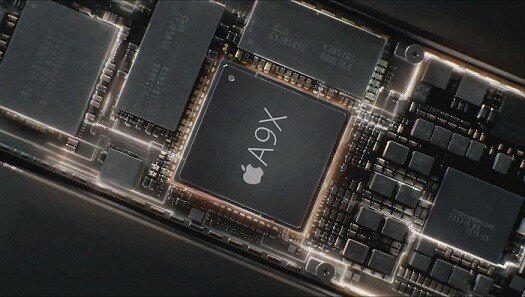
The Apple A9X is a 64-bit ARM-based system on a chip (SoC) designed by Apple Inc. It first appeared in the iPad Pro, which was announced on September 9, 2015 and was released on November 11, 2015.
Unlike the A9, the A9X does not contain an L3 cache due to its significant DRAM bandwidth. The A9X is paired with 4 GB of LPDDR4 memory in the 12.9″ iPad Pro and 2 GB of LPDDR4 memory in the 9.7″ iPad Pro with a total bandwidth of 51.2 GB/s. This high bandwidth is necessary to feed the SoC’s 12-core PowerVR 7 Series GPU. The RAM is not included in the A9X package unlike its sibling, the A9.
The A9X features an Apple-designed 64-bit ARMv8-A dual-core CPU called “Twister”. It offers double the memory bandwidth and double the storage performance of the Apple A8X.
Apple A series: A10 Fusion
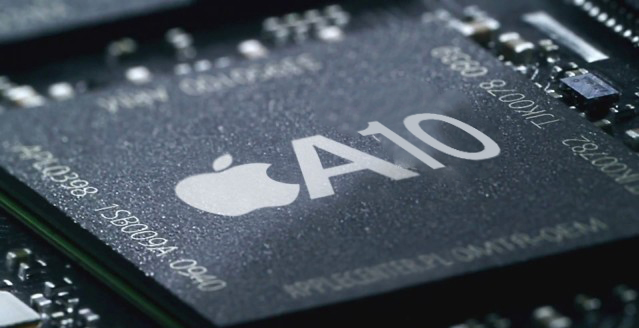
The Apple A10 Fusion is a 64-bit ARM-based system on a chip (SoC), designed by Apple Inc. and manufactured by TSMC. It first appeared in the iPhone 7 and 7 Plus which were introduced on September 7, 2016.
The A10 (internally, T8010) is built on TSMC’s 16 nm FinFET process and contains 3.3 billion transistors (including the GPU and caches) on a die size of 125 mm2. It features two Apple-designed 64-bit 2.34 GHz ARMv8-A cores called Hurricane, each with a die size of 4.18 mm2. As the first Apple-produced quad-core SoC, it has two high-performance cores designed for demanding tasks like gaming, while also featuring two energy-efficient Apple-designed 64-bit cores codenamed Zephyr at 0.78 mm2 for normal tasks in a configuration similar to the ARM big.LITTLE technology.
Apple A series: A10X Fusion

The A10X is paired with 4 GB of LPDDR4 memory in the second-generation 12.9″ iPad Pro and the 10.5″ iPad Pro, and 3 GB in the 4K Apple TV.
The A10X features an Apple-designed 64-bit 2.38 GHz ARMv8-A six-core CPU, with three high-performance Hurricane cores and three energy-efficient Zephyr cores. The A10X also integrates a twelve-core graphics processing unit (GPU) which appears to be the same Apple customized Imagination PowerVR cores used in the A10. Embedded in the A10X is the M10 motion coprocessor.
Apple A series: A11 Bionic
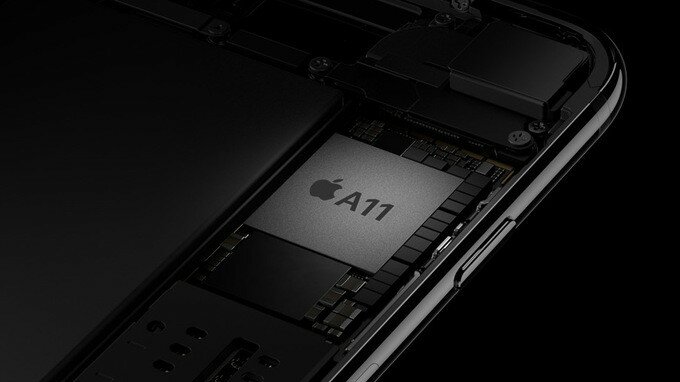
A11 Bionic first appeared in the iPhone 8, iPhone 8 Plus, and iPhone X which were introduced on September 12, 2017. The A11 features an Apple-designed 64-bit ARMv8-A six-core CPU, with two high-performance cores at 2.39 GHz, called Monsoon, and four energy-efficient cores, called Mistral. The Monsoon cores are a 7-wide decode out-of-order superscalar design, while the Mistral cores are a 3-wide decode out-of-order superscalar design.
The Mistral cores are based on Apple’s Swift cores from the Apple A6. The A11 uses a new second-generation performance controller, which permits the A11 to use all six cores simultaneously, unlike its predecessor the A10.
Apple A series: A12 Bionic
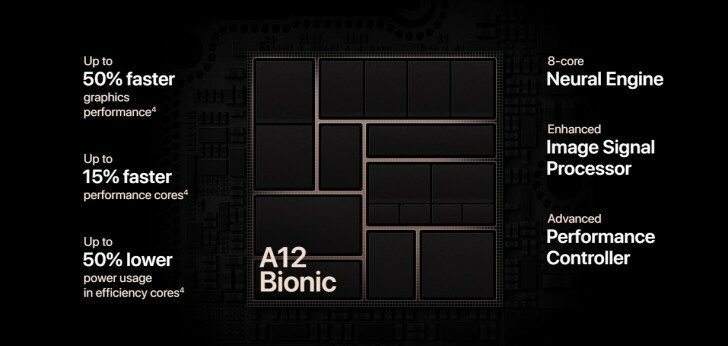
The A12 features an Apple-designed 64-bit ARMv8.3-A six-core CPU, with two high-performance cores running at 2.49 GHz called Vortex and four energy-efficient cores called Tempest. The Vortex cores are a 7-wide decode out-of-order superscalar design, while the Tempest cores are a 3-wide decode out-of-order superscalar design. Like the Mistral cores, the Tempest cores are based on Apple’s Swift cores from the Apple A6.
The A12 first appeared in the iPhone XS, XS Max, XR, and 2019 versions of the iPad Air and iPad Mini.
Apple A series: A12X Bionic
The A12X features an Apple-designed 64-bit ARMv8-A octa-core CPU, with four high-performance cores called Vortex and four energy-efficient cores called Tempest. The Vortex cores are a 7-wide decode out-of-order superscalar design, while the Tempest cores are a 3-wide decode out-of-ordersuperscalar design. Like the Mistral cores, the Tempest cores are based on Apple’s Swift cores from the Apple A6. It is Apple’s first SoC with an octa core CPU.
The A12X is manufactured by TSMC using a 7 nm FinFET process, and it contains 10 billion transistors vs. the 6.9 billion on the A12. The A12X is paired with 4 GB or 6 GB of LPDDR4X memory in the third-generation 12.9″ iPad Pro and the 11″ iPad Pro.
(To be continued)

